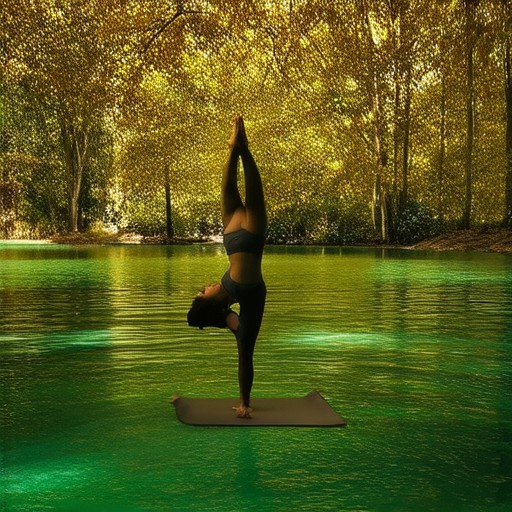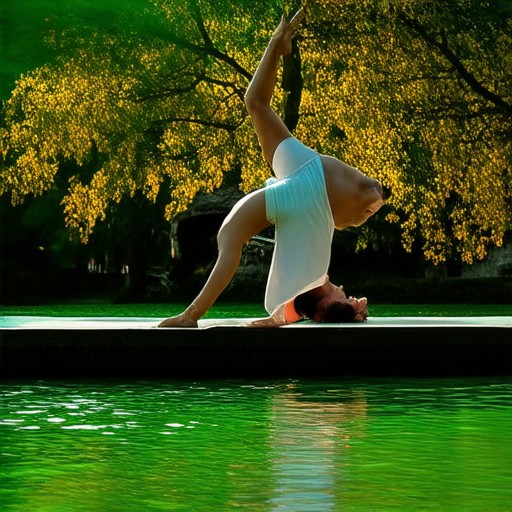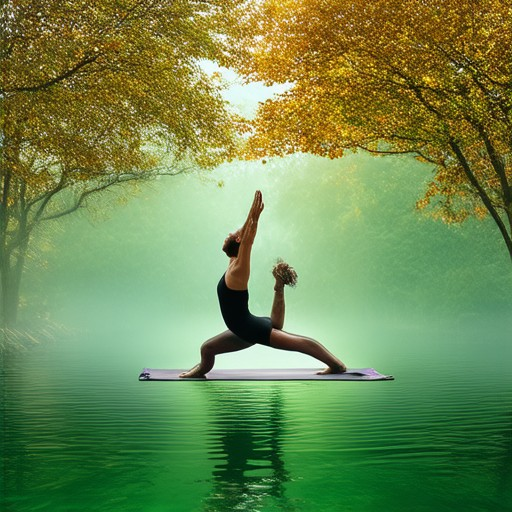Daily routines play a pivotal role in maintaining balance, a cornerstone of overall well-being. In today’s fast-paced world, many individuals struggle to find harmony between their busy schedules and the need for stability. Whether it’s navigating the demands of work, caring for family, or pursuing personal interests, the ability to maintain balance is essential for physical health, mental clarity, and emotional resilience. This article delves into proven daily activities that not only enhance balance but also contribute to improved mobility and injury prevention. By exploring practical exercises, mindful practices, and sustainable routines, we aim to empower readers to create a life that feels grounded and centered. From understanding the significance of balance in daily life to discovering effective strategies for incorporating it into routines, this comprehensive guide offers actionable insights for everyone seeking a more balanced existence.
Key Takeaways
- Walking: Enhances balance and prevents trips or falls.
- Climbing Stairs: Builds strength and ensures safe navigation.
- Standing on Toes: Challenges coordination and balance.
- Heel-Toe Walking: Demands precision for proper weight distribution.
- Side-by-Side Walking: Maintains balance while interacting with others.
- Set Clear Boundaries: Protects personal time and reduces stress.
- Prioritize Effectively: Uses techniques like the Eisenhower Matrix for efficiency.
- Engage in Hobbies and Interests: Fosters fulfillment and relaxation.
- Prioritize Sleep: Essential for physical and mental performance.
- Practice Mindfulness: Reduces stress and improves focus.
- Manage Finances Wisely: Provides security and peace of mind.
- Nurture Social Connections: Enhances emotional support and well-being.
- Focus on Health: Includes exercise and nutrition for overall well-being.
- Develop Adaptability Skills: Helps navigate life changes gracefully.
- Reflect and Adjust: Ensures continuous improvement and goal alignment.
- Obstacle Courses: Suitable for all ages and skill levels.
- Yoga: Improves both physical and mental balance.
- Pole Dancing: Requires strength, flexibility, and balance.
- Balance Boards: Aids in controlled movement practice.
- Team-Building Exercises: Promotes stability and teamwork.

Activities That Improve Balance
Improving your balance isn’t just about preventing falls—it’s about staying steady and confident in daily life. Here are some daily activities that can enhance your balance:
- Practice Tai Chi or Yoga : These mindful movement practices are renowned for improving balance. They focus on slow, controlled motions, helping you maintain equilibrium.
- Walk Regularly : Walking is a simple yet effective way to boost balance. Aim for at least 30 minutes most days of the week. Try walking on uneven surfaces like grass or gravel for added challenge.
- Engage in Strength Training : Building strength in your legs, core, and upper body can significantly improve your balance. Exercises like squats, lunges, and planks target muscles crucial for stability.
- Use Balance Boards or Wobble Cushions : These tools are excellent for home use. They provide a surface to practice your balance, making it easier to improve over time.
- Do Single-Leg Stance Exercises : Stand on one leg and hold for increasing durations. Start with 20 seconds and work your way up to 60 seconds. This strengthens your core and improves coordination.
- Try Functional Movement Exercises : Activities like standing on a wobbly chair or beam mimic real-life situations, helping you adapt to various surfaces and maintain balance.
- Avoid Shoes with Thick Heels : Opt for shoes with low heels or non-slip socks during exercises to minimize the risk of slipping and maintain better balance.
- Strengthen Your Core : Core strength is vital for balance. Perform exercises like planks, Russian twists, and bicycle crunches to build a strong midsection.
- Be Consistent : Like any skill, balance improves with regular practice. Incorporate these activities into your daily routine for the best results.
By integrating these activities into your daily life, you can enjoy greater stability and confidence in your movements. Remember, consistency is key to seeing noticeable improvements over time.
What are everyday examples of balance?
Balance in life refers to the ability to maintain harmony between various aspects of your existence. Here are everyday examples that illustrate balance:
- Physical Activities:** Engage in exercises that improve strength, flexibility, and coordination. Activities like yoga, tai chi, or simply walking can help maintain physical balance.
- Emotional Well-being:** Practice mindfulness or meditation to manage stress and maintain emotional balance. Setting healthy boundaries in relationships also plays a role in emotional equilibrium.
- Financial Planning:** Create a budget to manage income and expenses effectively, ensuring financial stability and preventing overspending.
- Social and Professional Life:** Maintain a healthy work-life balance by dedicating time to hobbies, family, and friends. Avoid overcommitting to avoid burnout.
- Mindfulness Practices:** Incorporate spiritual or mindfulness practices, such as journaling or spending time in nature, to cultivate inner peace and balance.
By integrating these practices into your daily routine, you can achieve a more balanced and fulfilling life. Remember to take regular breaks and seek support when needed to maintain equilibrium across all areas of your life.

What is the Best Exercise to Improve Your Balance?
Improving your balance is essential for maintaining stability and preventing injuries, especially as you age. While various exercises can contribute to better balance, the most effective ones often combine strength, flexibility, and coordination. Here’s a breakdown of the best approaches:
- Yoga :
Yoga is renowned for its ability to enhance balance due to its emphasis on controlled movements and postures. Practices like downward dog, warrior II, and tree pose target various muscle groups, improving overall stability. Consistent practice can lead to greater awareness of your body’s alignment and posture. - Pilates :
Pilates, another excellent option, focuses on core strength, which is crucial for balance. Exercises like the Pilates hundred and pelvic tilts work on stabilizing the spine and pelvis, directly contributing to better balance. Over time, these movements become more fluid and controlled. - Tai Chi :
Often recommended for its meditative properties, Tai Chi is equally effective for balance. The slow, deliberate motions of Tai Chi help improve your body’s ability to react smoothly to changes in your environment. Forms like Yang and Wu Quan emphasize weight distribution and stability. - Strength Training :
Building strength in your legs, core, and lower body can significantly boost your balance. Exercises like squats, lunges, and deadlifts target major muscle groups responsible for maintaining posture and stability. Progressive overload and proper form are key to maximizing benefits. - Agility Drills :
Activities like single-leg balances and plyometric jumps challenge your body’s ability to change direction quickly. These drills improve reaction time and coordination, making falls less likely during daily activities. - Dynamic Stretching :
Stretching before and after physical activity can enhance flexibility and range of motion, both of which play roles in maintaining balance. Incorporate moves like leg swings, hip flexor stretches, and torso twists into your routine.
For added guidance, check out our full-body workout guide for more tips on building strength and mobility. By incorporating these exercises into your routine, you can enjoy improved balance and confidence in your daily life.

Which Daily Activity Do We Use Balance?
Balance is essential for various daily activities that require stability and coordination. Here are some examples:
- Walking:** Maintaining steady footing while walking helps prevent trips and falls.
- Climbing Stairs:** Going up and down stairs safely requires balance and strength.
- Standing on Toes:** This activity challenges balance and coordination.
- Heel-Toe Walking:** Requires precise balance to alternate weight distribution properly.
- Side-by-Side Walking:** Maintaining balance while walking next to someone or an object.
Improving balance can be achieved through regular exercises like tai chi, yoga, or simple home workouts focusing on leg strength and core stability. These practices not only enhance balance but also contribute to overall physical well-being.
How to Achieve Balance in Daily Life
To achieve balance in your daily life, consider implementing the following strategies:
- Set Clear Boundaries : Establish firm boundaries between work and personal time to prevent one area from dominating the other. Learn to say “no” when necessary to protect your personal time.
- Prioritize Effectively : Create a daily task list focusing on what is urgent and important. Use techniques like the Eisenhower Matrix to categorize tasks and prioritize accordingly.
- Engage in Hobbies and Interests : Make time for activities you enjoy, whether it’s sports, art, reading, or spending time with loved ones. These activities can provide a sense of fulfillment and relaxation.
- Prioritize Sleep : Aim for 7-9 hours of quality sleep each night. Establish a consistent sleep schedule and create a relaxing bedtime routine to improve both physical and mental performance.
- Practice Mindfulness : Incorporate mindfulness or meditation into your daily routine. Even brief sessions can reduce stress and improve focus, helping you maintain balance.
- Manage Finances Wisely : Ensure financial stability by budgeting, saving, and investing. A secure financial foundation contributes significantly to overall balance and peace of mind.
- Nurture Social Connections : Maintain strong relationships through regular communication and shared activities. Healthy social ties provide emotional support and enhance your sense of well-being.
- Focus on Health : Prioritize physical health by exercising regularly, eating nourishing meals, and avoiding harmful habits. Consistent self-care is essential for long-term balance.
- Develop Adaptability Skills : Embrace change and uncertainty with resilience. Flexibility allows you to adjust to life’s challenges without losing your equilibrium.
- Reflect and Adjust : Regularly assess your progress and adjust your strategies as needed. Self-awareness helps identify areas for improvement and maintains momentum toward your goals.
By integrating these strategies, you can create a more harmonious and fulfilling life, balancing productivity with personal well-being.

What is an activity that uses balance?
An activity that uses balance can be found in various forms, from physical exercises to team-building events. One popular option is participating in obstacle courses, which challenge participants to maintain their equilibrium while navigating through different challenges. Another engaging activity is tai chi, a martial art that emphasizes balance, coordination, and relaxation.
Here are some examples of balance activities:
- Obstacle courses: These can be designed for all ages and skill levels, featuring tasks like hopping on one foot, walking on a narrow beam, or stepping over low barriers.
- Yoga: Many yoga poses require excellent balance, such as tree pose or warrior III. These practices not only improve physical balance but also mental focus.
- Pole dancing: This activity demands strength, flexibility, and balance as dancers perform moves on a vertical pole.
- Balance boards: Using a wobble board or similar tool can help improve balance through controlled movements.
- Team-building exercises: Activities like blindfolded balance walks or tightrope walks promote teamwork and physical stability.
These activities can be enjoyed individually or as part of group sessions, making them versatile for different settings. Whether for fitness, recreation, or mental well-being, balance activities offer numerous benefits to participants.




0 Comments